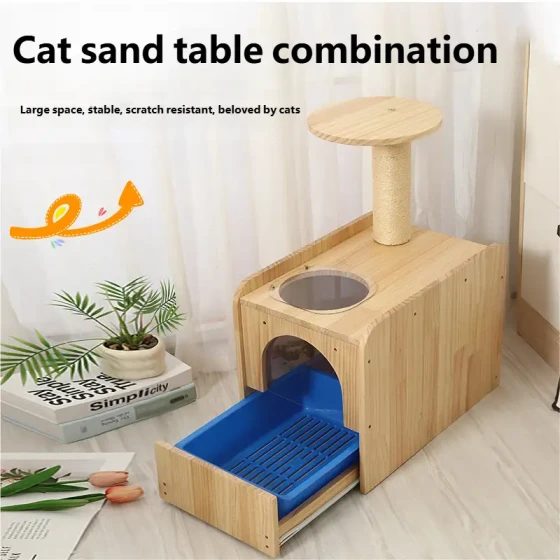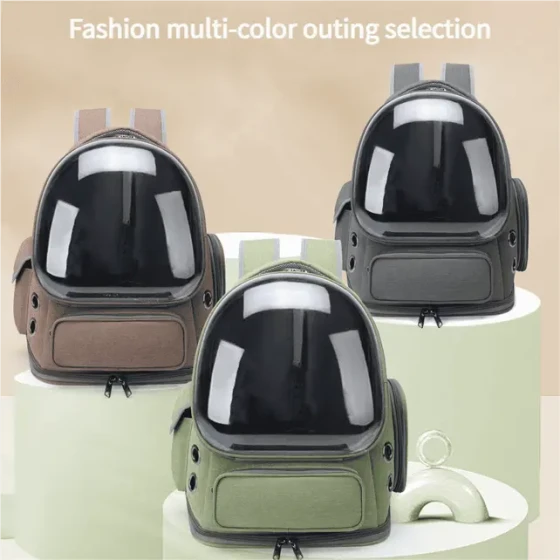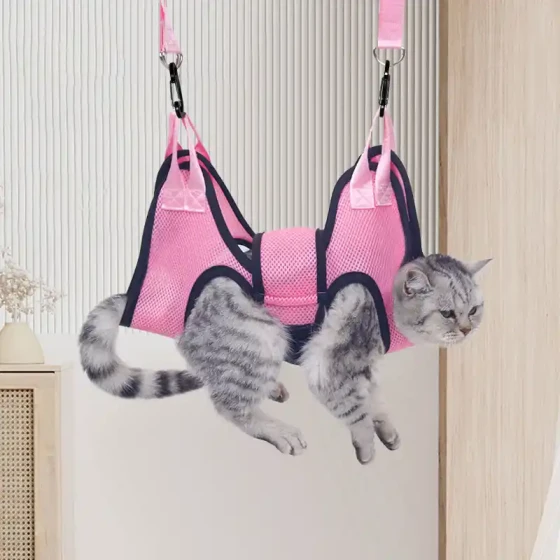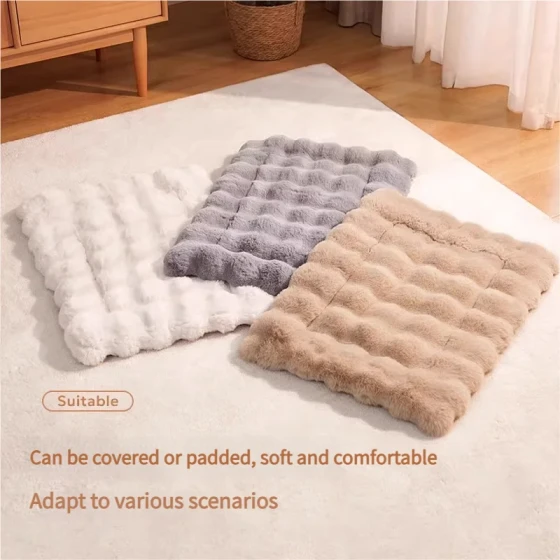Which Brand of Kitten Food Is Good_High Cost-Effective Quality Kitten Food Brand Recommendation
Whether you are a novice cat owner who just brought home a little kitten or an experienced one, selecting a suitable kitten food for the lively and rapidly growing little one is an important task that requires "doing your homework." A quality kitten food lays a solid foundation for their growth, helping them grow up healthy and happy. When choosing kitten food, you should not only look at the price or advertisements but more importantly focus on its nutritional content, ingredient quality, and whether it suits your cat.
Which brand of kitten food is good? When choosing kitten food, the primary focus is whether it can meet the rich protein, fat, and key nutrient needs required for kittens’ rapid growth and development, while ensuring the ingredients are high quality and easily digestible. High cost-effective quality kitten food brands usually provide comprehensive nutrition at a reasonable price and have a good reputation.
Next, we will discuss in detail how to choose the most suitable kitten food for your little angel and which types of kitten food on the market are worth considering.
Why Do Kittens Need Special Cat Food?
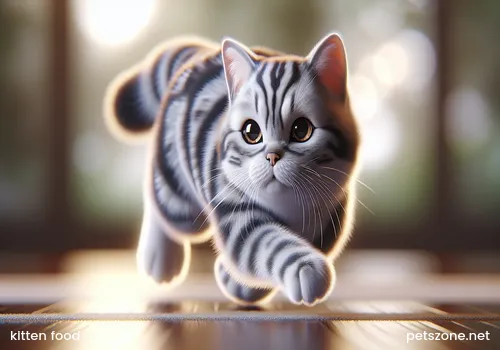
You might be curious, isn’t all cat food the same? Why must it be "kitten food"? Actually, it’s like babies needing formula milk. Kittens are at the critical stage of growth and development; their bodies are still maturing rapidly, and their nutritional needs differ significantly from adult cats.
- High energy demand: Kittens grow and play vigorously every day; their metabolism is very fast and requires much more energy than adult cats. Kitten food usually provides higher calorie density to ensure they eat well and have enough "fuel" to explore the world.
- Rich protein and fat: Protein is the foundation for building body tissues (muscles, organs), and fat provides energy and essential fatty acids. Kittens need a higher proportion of quality animal protein and fat to support rapid muscle and bone growth.
- Key vitamins and minerals: The calcium-to-phosphorus ratio is crucial for bone development; taurine is an essential amino acid for cats—lack of it can cause vision and heart problems; DHA helps brain and vision development. Kitten food specially enhances the content of these key nutrients.
- Digestibility: Kittens’ digestive systems are not fully matured and are prone to gastrointestinal discomfort. Quality kitten food uses easily digestible ingredients to reduce the digestive burden.
- Pellet size: Kittens have small mouths and teeth, so kitten food pellets are usually made smaller, making it easier for them to chew and swallow.
Therefore, feeding kittens special kitten food is not pretentious but essential for their healthy growth.
Choosing Kitten Food, "Sharp Eyes" Look Here!
Facing a wide variety of cat food on the shelves, how do you pick that destined "perfect food"? Don’t rush; following these key points can help you avoid pitfalls.
1. Ingredient List — The "ID Card" of Cat Food
This is the most important basis for judging the quality of cat food. Remember, the order of ingredients is arranged from highest to lowest content.
- What should be first? It must be a high-quality animal protein source, such as "chicken," "chicken meal," "salmon," "salmon meal," etc. "Meat meal" here refers to the processed and concentrated product of meat; if sourced from a specific animal (like chicken meal), it is also a good protein source. Avoid large amounts of grains (corn, wheat, etc.) or plant proteins (soybean, pea protein) in the first few ingredients because cats are obligate carnivores and absorb animal protein much better.
- Be cautious of "by-products" and "undefined meats": Descriptions like "poultry by-products," "animal by-products" are vague and may include organs, bones, etc. (some quality by-products are nutritious but vague labeling makes it hard to judge). It’s better to have clearly labeled meat or meat meals. If it only says "meat meal" without specifying "chicken meal" or "beef meal," it indicates less transparency.
- Pay attention to fat sources: Animal fats (like chicken fat) are important energy sources and provide essential fatty acids. Quality fats help keep cats’ coats healthy and shiny.
- The less carbohydrate, the better: Cats require few carbohydrates; excessive grains or starch ingredients (potatoes, tapioca, etc.) may increase digestive burden and lead to obesity. Many quality cat foods advertise "grain-free" or "low-grain" which is a good direction to choose.
- Added nutrients: Ensure the ingredient list includes taurine, essential fatty acids (such as Omega-3 and Omega-6), vitamins (A, D, E, B-complex), and minerals (calcium, phosphorus, zinc, etc.). DHA (docosahexaenoic acid) is important for kittens' brain and vision development and is a bonus.
- Avoid artificial additives: Artificial colorants, flavors, and preservatives are not beneficial to cats’ health and may have potential risks with long-term ingestion. Try to select cat food using natural preservatives (like mixed tocopherols, i.e., vitamin E).
2. Guaranteed Analysis — Hard Data
Guaranteed Analysis lists the minimum or maximum percentages of crude protein, crude fat, crude fiber, moisture, etc. in the cat food.
- Crude protein and crude fat: The crude protein content in kitten food is generally recommended to be above 30%-40%, and crude fat above 15%-25%. Of course, this is just a reference range, and you should also consider the quality of protein and fat sources from the ingredient list.
- Calcium-phosphorus ratio: Very important for kittens’ bone development, with an ideal ratio between 1.1:1 and 1.4:1. Many brands provide this data on their official websites or packaging.
- Moisture: Dry cat food typically contains less than 10% moisture. If you want to increase your cat’s water intake, you can feed wet food alongside dry food.
3. Palatability — The Cat Decides
No matter how good the nutrition is, it’s useless if the cat does not like it. Palatability is hard to judge just by packaging, but you can try small packages for tasting or refer to other owners’ reviews. Of course, every cat has different tastes, so your cat’s preference is the final vote.
4. Brand Reputation and Product Line
Choosing brands with a good reputation and focused on pet nutrition research is usually more reliable. These brands often have stricter quality control and more stable product quality. Also, whether the brand offers specialized kitten food for different growth stages (such as nursing kittens, weaning period, growth period) or different needs reflects their professionalism.
5. High Cost-Effectiveness — Find the Balance
"High cost-effectiveness" does not mean the cheapest cat food but refers to reasonable pricing while ensuring excellent quality and meeting kittens’ nutritional needs. Quality ingredients, scientific formulations, and strict quality control all require costs; this will inevitably be reflected in the product price.
Within your budget, try to select cat food with high-quality animal protein as top ingredients, grain-free or low grain, and free of artificial additives. Sometimes, slightly more expensive cat food may have higher nutrient density, meaning less feeding volume is needed, so the daily cost is not much higher than cheaper cat food. What’s more, it benefits your cat’s health and can save future veterinary expenses, which is the real "cost-effectiveness!"
High Cost-Effective Kitten Food Can Be Selected from These Aspects
Since it is inconvenient to directly recommend specific brands (to avoid advertising suspicion and because brand formulations update), we can look for high cost-effective kitten food from these directions:
- Focus on imported brands with stable supply chains: Some brands with good international reputations and early entry into the Chinese market have rich product lines including special kitten foods. Their prices might be more affordable than certain high-end niche brands but quality is relatively guaranteed. You can investigate these on major pet e-commerce platforms or physical stores.
- Choose domestic brands with certain scale and R&D strength: Recently, the domestic pet food industry has developed rapidly; some brands with independent R&D capabilities and attention to ingredient sourcing and manufacturing processes have launched good kitten foods. Their advantage may be better price alignment with domestic consumers, but be sure to study the ingredients and user reviews carefully.
- Check genuine user reviews in large pet communities and forums: Many owners share their experience and feelings after feeding different cat foods on social platforms and forums. These real user reviews (especially about palatability, stool condition, coat condition) are valuable references. But be mindful of judging whether content is marketing.
- Consult veterinarians or professionals: Vets or pet nutritionists can give more professional feeding advice and kitten food selection guidance based on your cat’s age, weight, health status, breed, etc.
Remember, there is no absolute "best" cat food brand, only the cat food that suits your kitten best. Doing your homework and combining it with your cat’s actual situation to choose is the key.
Kitten Feeding Precautions
After choosing the cat food, feeding methods are equally important.
- Feed small amounts frequently: Kittens have small stomach capacity and require multiple feedings a day (usually 3-4 times or more). With age, feeding frequency can gradually be reduced.
- Regular timing and quantity: Establish regular feeding times and feed appropriate amounts each time to avoid overfeeding, which may cause obesity or indigestion. You can refer to the suggested feeding amounts on the packaging and adjust based on your cat’s size and activity level.
- Provide fresh clean water anytime: Water is vital for cat health, especially for cats eating dry food. Always ensure they can drink clean fresh water.
- Change food gradually: If you need to switch cat food, mix old and new food gradually, increasing the new food ratio over at least a week to avoid sudden changes causing digestive upset or diarrhea.
- Observe your cat’s condition: After feeding new cat food, closely observe your cat’s mental state, appetite, weight changes, stool condition (shape, color, smell), and coat condition. If abnormalities appear, it may indicate the food is unsuitable and adjustments are needed.
Frequently Asked Questions
Q1: Can kittens eat kitten food all the time?
A1: Kitten food is specially formulated for the growth and development stage of kittens, generally it is fine to switch to adult cat food around 1 year old. Of course, the exact transition time depends on breed and growth speed; some large breeds may require kitten food longer. Following veterinary advice or packaging recommendations is safer.
Q2: How do I know if my kitten food is suitable?
A2: Suitable kitten food allows a kitten to maintain healthy weight gain, energetic behavior, smooth and shiny coat, and regular, normal-shaped stools (not too soft or hard). Loss of appetite, stagnant or weight loss, lethargy, vomiting, diarrhea, or constipation may indicate unsuitability.
Q3: Is imported cat food definitely better than domestic cat food?
A3: Not necessarily. Both imported and domestic brands have excellent and average products. The key lies in ingredient quality, nutritional formulation, and quality control standards. Selection should be based on product quality itself rather than origin.
Q4: Which is better, wet food or dry food?
A4: Dry food is convenient for storage and feeding and helps clean teeth (though limited effect); wet food has high moisture content, helps cats hydrate, and benefits urinary health. Feeding both can complement each other. For cats that drink little water, increasing wet food proportion is important.
Q5: Is homemade cat food feasible?
A5: Theoretically yes, but ensuring complete and balanced nutrition is very difficult, requiring very professional pet nutrition knowledge and precise formulations. Unbalanced nutrition can lead to malnutrition or toxicity over time. For ordinary owners, commercial cat food is usually safer and more convenient.
Summary
Choosing a high cost-effective and quality kitten food is the first step to raising a healthy kitten. This requires detective-like careful study of ingredient lists and guaranteed analysis, combined with your cat’s individual circumstances to judge. High-quality animal protein, appropriate fat content, essential vitamins and minerals (especially taurine and DHA), good palatability and digestibility are all important factors.
Please remember, investing in high-quality kitten food is not just spending money but an investment in your cat’s future health. We hope every owner can find that "miraculous cat food" that makes their little cutie eat well and stay very healthy!
